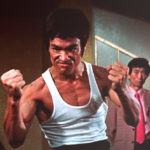 Music
Music  Music
Music  History
History 10 Less Than Jolly Events That Occurred on December 25
 Weird Stuff
Weird Stuff 10 Funny Ways That Researchers Overthink Christmas
 Politics
Politics 10 Political Scandals That Sent Crowds Into the Streets
 Weird Stuff
Weird Stuff Ten Bizarre Facts About The Doge Meme
 Our World
Our World 10 Ways Your Christmas Tree Is More Lit Than You Think
 Movies and TV
Movies and TV The 10 Coolest Stars to Set Sail on The Love Boat
 History
History 10 Things You Didn’t Know About the American National Anthem
 Technology
Technology Top 10 Everyday Tech Buzzwords That Hide a Darker Past
 Humans
Humans 10 Everyday Human Behaviors That Are Actually Survival Instincts
 Music
Music 10 Surprising Origin Stories of Your Favorite Holiday Songs
 History
History 10 Less Than Jolly Events That Occurred on December 25
 Weird Stuff
Weird Stuff 10 Funny Ways That Researchers Overthink Christmas
Who's Behind Listverse?

Jamie Frater
Head Editor
Jamie founded Listverse due to an insatiable desire to share fascinating, obscure, and bizarre facts. He has been a guest speaker on numerous national radio and television stations and is a five time published author.
More About Us Politics
Politics 10 Political Scandals That Sent Crowds Into the Streets
 Weird Stuff
Weird Stuff Ten Bizarre Facts About The Doge Meme
 Our World
Our World 10 Ways Your Christmas Tree Is More Lit Than You Think
 Movies and TV
Movies and TV The 10 Coolest Stars to Set Sail on The Love Boat
 History
History 10 Things You Didn’t Know About the American National Anthem
 Technology
Technology Top 10 Everyday Tech Buzzwords That Hide a Darker Past
 Humans
Humans 10 Everyday Human Behaviors That Are Actually Survival Instincts
10 Real-Life Killers Whose Crimes Recreated Movie Scenes
Why do people commit crimes? The reasons vary—lack of self-control, impulsivity, or even deep personal grievances. While greed often fuels white-collar schemes and revenge fuels violent retaliation, most motives fall into recognizable categories.
But what about those who kill to mimic a movie?
While many of us walk out of a thriller with goosebumps, a few disturbed individuals see a blueprint. These killers didn’t just draw inspiration from Hollywood—they attempted to recreate scenes with chilling precision. Sometimes for attention. Sometimes out of delusion. Sometimes because they believed fiction could become reality.
Here are ten real-life murderers whose crimes crossed the line between screen and real life.
Related: The Ten Most Shocking and Horrific Television Murders Ever
10 Brian Draper and Torey Adamcik Were Inspired by Scream (1996)
In September 2006, two 16-year-old high school students from Idaho—Brian Draper and Torey Adamcik—carried out a murder that shocked the country. They stabbed their classmate, Cassie Jo Stoddart, roughly 30 times while she was house-sitting for her relatives. The boys later admitted they were trying to mimic scenes from the horror film Scream.
The duo had a shared obsession with horror movies, serial killers, and infamy. They idolized the Columbine shooters and often discussed fantasies of violence. They even compiled a “death list” of potential victims and filmed themselves discussing their plans, giggling and boasting about how they’d become legends.
On the night of September 22, Draper and Adamcik visited Cassie and her boyfriend, Matt Beckham, under the guise of hanging out. After leaving the house briefly, Draper unlocked a basement door to sneak back in. Once Matt left, they returned wearing dark clothes and Ghostface-style masks. They cut the power to the house in an effort to terrify Cassie, then ambushed her upstairs and stabbed her to death.
The police found a chilling trail of evidence, including a VHS tape with confessions and a cache of bloodied weapons. Draper and Adamcik were both sentenced to life without parole.[1]
9 Nathaniel White Was Inspired by RoboCop 2 (1990)
Nathaniel White terrorized New York’s Hudson Valley in 1991, killing six women in a spree that lasted just a few months. What set his crimes apart—aside from their brutality—was the fact that White claimed he was directly inspired by a scene from RoboCop 2, a futuristic action flick not exactly known for realism.
One victim, Juliana Frank, was eight months pregnant. Her body was discovered in an abandoned farmhouse, brutally stabbed in the abdomen. White later confessed to police that he had watched a scene in RoboCop 2 where a man is stabbed repeatedly in the stomach—and couldn’t stop thinking about it. “I said that looks nice,” he told investigators.
He described mimicking the scene nearly step-for-step, using a hunting knife and replicating the stabbing motions with eerie precision. White even admitted that the visual replayed in his head until he couldn’t resist acting it out. Over time, his violence escalated.
His victims included teenage runaways, a homeless woman, and other women he encountered at random. Several had been sexually assaulted. After his arrest, he led police to multiple crime scenes and pleaded guilty. Sentenced to 150 years to life, White remains a chilling reminder of how media can feed already dangerous impulses.[2]
8 John Hinckley Jr. Was Inspired by Taxi Driver (1976)
On March 30, 1981, John Hinckley Jr. shot President Ronald Reagan in broad daylight. But his motive wasn’t tied to ideology or politics—it was a twisted attempt to impress actress Jodie Foster. The crime echoed the climax of Martin Scorsese’s 1976 film Taxi Driver, where loner Travis Bickle plans a political assassination.
Hinckley became obsessed with Foster after watching the film dozens of times. He mimicked Bickle’s wardrobe, speech, and behavior. He also began stalking Foster at Yale University and wrote her letters professing love and admiration. His logic? That carrying out a dramatic act of violence would somehow win her heart.
Armed with a revolver, Hinckley fired six times outside the Washington Hilton. Reagan was hit by a ricocheted bullet; Press Secretary James Brady suffered permanent brain damage. Two others were also injured.
Hinckley was found not guilty by reason of insanity and committed to a psychiatric hospital for over 30 years. The case led to public outrage, changes in insanity plea laws, and endless debate about whether fiction had influenced a real-world assassination attempt—or simply mirrored the delusions of a disturbed man.[3]
7 Sarah Edmondson and Benjamin Darras: Natural Born Killers (1994)
In March 1995, teenagers Sarah Edmondson and Benjamin Darras set out on a two-state crime spree that left one man dead and another paralyzed. Their inspiration? Oliver Stone’s controversial film Natural Born Killers, which portrays a couple on a bloody rampage glamorized by the media.
Darras, 18, and Edmondson, 19, watched the movie multiple times while under the influence of LSD. According to court documents, they talked about recreating the film’s chaotic violence. Their first victim, 50-year-old William Savage, was shot in the head in his Mississippi office. The next day, in Louisiana, Edmondson shot convenience store clerk Patsy Byers during a robbery. Byers survived but was left paralyzed—and later died from complications.
The teens returned to Oklahoma and were eventually arrested. Police found the murder weapon and linked them to both scenes. Edmondson confessed and received 35 years in prison. Darras was sentenced to life without parole.
The victims’ families sued Warner Bros. and Oliver Stone, claiming the film inspired the killings. Though the case was dismissed, it reignited fierce debates over whether art could incite violence—or whether disturbed minds simply latch onto what’s convenient.[4]
6 Daniel Sterling Was Inspired by Interview with the Vampire (1994)

In 1994, just days after watching Interview with the Vampire, Daniel Sterling tried to kill his girlfriend, Lisa Stellwagen, in an attack straight out of a gothic nightmare. He claimed he was inspired by the film’s dark themes and the idea of eternal love through blood.
Sterling, 26, had watched the movie with Stellwagen in late September. She later told police that afterward, he began making disturbing remarks about drinking her blood and living forever. One line stood out: “If I can’t have you, I’ll make you immortal.”
On October 3, while she slept, Sterling stabbed her seven times in the chest and back. He then slashed his own hand and attempted to drink her blood. Despite her injuries, Stellwagen escaped and got help.
Sterling was caught the next day and confessed. He referenced the movie directly, saying it awakened a fantasy that had been simmering for some time. Prosecutors argued it was less about film influence and more about possessiveness and control. He was sentenced to up to 20 years in prison.
The case made headlines nationwide and added fuel to ongoing fears about the effect of media on vulnerable minds.[5]
5 Robert Berdella Was Not Inspired by The Silence of the Lambs (1991)
Robert Berdella earned the grim nickname “The Kansas City Butcher” after torturing and killing at least six young men between 1984 and 1988. His crimes were so gruesome—photographs of mutilated victims, handwritten torture logs, and makeshift prison cells—that people quickly likened him to fictional killers like Hannibal Lecter from The Silence of the Lambs.
But here’s the catch: The Silence of the Lambs didn’t come out until 1991, three years after Berdella was arrested. Any connection between him and Lecter is purely retrospective.
That didn’t stop comparisons. Berdella drugged his victims, kept them bound in his home for days or weeks, and documented everything in sickening detail. He was fascinated by control and inflicting pain. When one victim escaped and contacted police, authorities found a literal house of horrors.
Though he later expressed remorse, Berdella accepted a plea deal to avoid the death penalty and was sentenced to life in prison. He died of a heart attack in 1992. In the public imagination, Berdella became a real-life Lecter figure—but he wasn’t a copycat. His case just shows how life sometimes imitates horror before horror imitates it back.[6]
4 Herbert Mullin Claimed The Catcher in the Rye Influenced His Killings
Herbert Mullin killed 13 people in California over four months in 1972 and 1973. His stated motive? He believed the murders would prevent a catastrophic earthquake. But among his many delusions, Mullin also cited The Catcher in the Rye as a kind of spiritual guide.
The novel, written by J.D. Salinger, has no violence or murder in it—but Mullin believed it contained hidden messages encouraging him to act. He also reportedly owned copies of the book filled with cryptic notes and believed its protagonist, Holden Caulfield, shared his disdain for society’s “phonies.”
Psychiatrists diagnosed Mullin with paranoid schizophrenia, and voices in his head urged him to kill. His victims were random—ranging from a priest to hitchhikers to an elderly man—and the killings appeared chaotic and senseless.
Though The Catcher in the Rye wasn’t the root of his psychosis, Mullin used it as a symbolic crutch. He was convicted of multiple counts of first-degree murder and sentenced to life in prison. His case remains one of the most extreme examples of how delusional minds can misinterpret literature to justify acts of terror.[7]
3 Martin Bryant Was Allegedly Obsessed with Child’s Play 2 (1990)
On April 28, 1996, Martin Bryant walked into a café at the Port Arthur historic site in Tasmania and opened fire. By the time it ended, 35 people were dead and 23 more were injured in what became one of the deadliest mass shootings in modern history.
Authorities struggled to explain Bryant’s motive. He had a long history of mental health issues, low IQ, and social isolation. Early media reports noted his obsession with the Child’s Play franchise—particularly the 1990 sequel, Child’s Play 2. Friends claimed he quoted the films often and displayed an eerie fascination with their sadistic humor.
While Child’s Play 2 doesn’t depict mass shootings, its over-the-top violence and chaotic energy allegedly resonated with Bryant. A psychological report later suggested that he may have blurred fiction and reality, identifying with the glee and destruction associated with the character of Chucky.
Though there was never a direct link between the movie and the massacre, the speculation was enough to stir public outrage and contribute to Australia’s landmark gun control reforms. The country banned many automatic weapons within months of the attack.[8]
2 Luka Magnotta Was Influenced by Multiple Movies
In 2012, Canadian porn actor Luka Magnotta recorded and uploaded a murder video titled “1 Lunatic 1 Ice Pick.” It showed him killing and dismembering Chinese student Jun Lin—complete with music, props, and camera staging that echoed stylized Hollywood horror.
Investigators quickly drew parallels to American Psycho and Basic Instinct. In American Psycho, Christian Bale plays Patrick Bateman, a wealthy sociopath who records and narrates his killings. Magnotta mirrored this behavior by filming the murder with choreographed movements, posing the body, and editing in music.
The weapon he used—an ice pick—was a clear reference to Basic Instinct’s infamous interrogation scene. He even decorated the room with a Casablanca poster, reinforcing the theatrical nature of the act. Before the murder, Magnotta had posted animal abuse videos and fan tributes to Bateman.
After mailing body parts to Canadian government offices and schools, he fled to Europe. He was captured in Berlin after being recognized in an internet café.At trial, experts testified about his narcissism and personality disorders. The jury rejected the insanity defense, and Magnotta received a life sentence. His crime remains one of the most horrifying examples of real-life violence performed for an audience.[9]
1 Joshua Cooke Was Influenced by The Matrix (1999)
In 2003, 19-year-old Joshua Cooke killed his adoptive parents in their Virginia home using a shotgun. What made the case so unsettling—beyond the brutality—was that Cooke claimed he thought he was living in The Matrix.
Obsessed with the film’s simulated reality concept, Cooke wore a black trench coat, created screen names like “NeoOne,” and practiced “gun fu” with illegally purchased weapons. He later told police he believed the world was a simulation and that his violent actions were pre-scripted, like a scene from the movie.
On the night of the killings, he walked into the basement where his parents were watching TV and shot his father in the chest and face. He then turned the gun on his mother. Afterward, he calmly called 911 and confessed.
Initially charged with capital murder, Cooke pleaded guilty to avoid the death penalty and received two life sentences. He later recanted his belief in The Matrix and blamed his actions on untreated mental illness, isolation, and depression.
His case helped coin the term “The Matrix Defense” and remains a disturbing look at how powerful narratives can intertwine with delusion in the worst possible way.[10]








